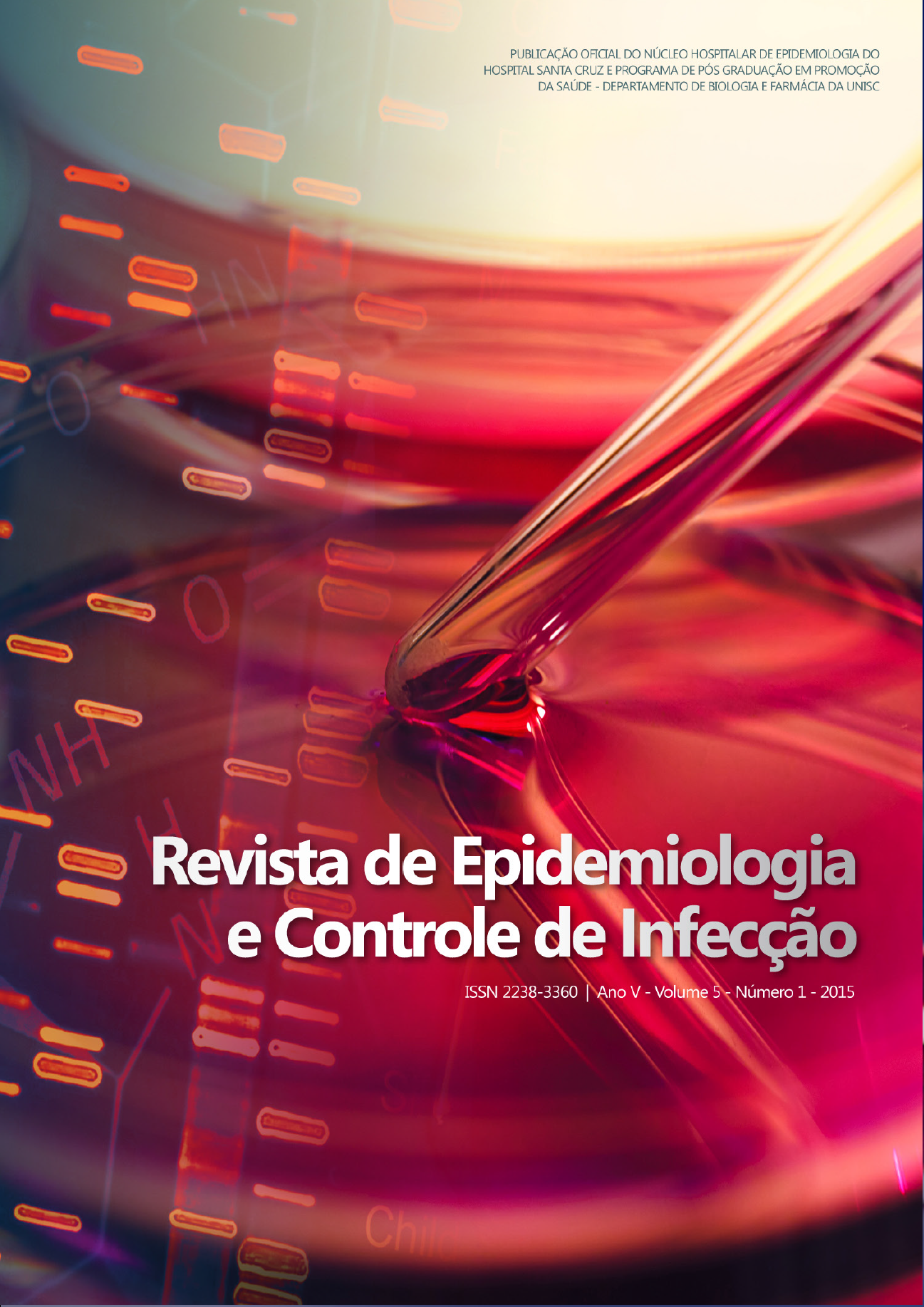APACHE II as an indicator of ventilator-associated pneumonia (VAP).
DOI:
https://doi.org/10.17058/reci.v5i1.4828Abstract
Background and objectives: strategies for risk stratification in severe pathologies are extremely important. The aim of this study was to analyze the accuracy of the APACHE II score as an indicator of Ventilator-Associated Pneumonia (VAP) in ICU patient sat Hospital Nossa Senhora da Conceição (HNSC) Tubarão-SC. Methods: It was conducted a prospective cohort study with 120 patients admitted between March and August 2013, being held APACHE II in the first 24 hours of mechanical ventilation (MV). Patients were followed until the following gout comes: discharge or death. It was also analyzed the cause of ICU admission, age, gender, days of mechanical ventilation, length of ICU and outcome. Results: The incidence of VAP was 31.8% (38/120). Two variables showed a relative riskin the development of VAP, APACHE II above average (RR = 1,62; IC 95% 1,03-2,55) and males (RR = 1,56; IC 95 % 1,18-2,08). The duration of mechanical ventilation (days) above average18.4± 14.9(p =0.001), ICU stay (days) above average 20.4± 15.3(p =0.003) presented the development of VAP. The accuracy of APACHE II in predicting VAP score >23, showed a sensitivity of 84% and specificity of 33%. Inrelation to death, two variables showed relative risk, age above average (RR=2.08; 95% CI =1.34 to 3.23) and ICU stay above average (RR=2.05; CI 95 =1.28 to 3.28%). Conclusion: The APACHE II score above or equal 23 might to indicate the risk of VAP. Keywords: Pneumonia, Ventilator-Associated, Intensive Care Units, APACHE. PrognosisDownloads
Downloads
Published
How to Cite
Issue
Section
License
The author must state that the paper is original (has not been published previously), not infringing any copyright or other ownership right involving third parties. Once the paper is submitted, the Journal reserves the right to make normative changes, such as spelling and grammar, in order to maintain the language standard, but respecting the author’s style. The published papers become ownership of RECI, considering that all the opinions expressed by the authors are their responsibility. Because we are an open access journal, we allow free use of articles in educational and scientific applications provided the source is cited under the Creative Commons CC-BY license.


